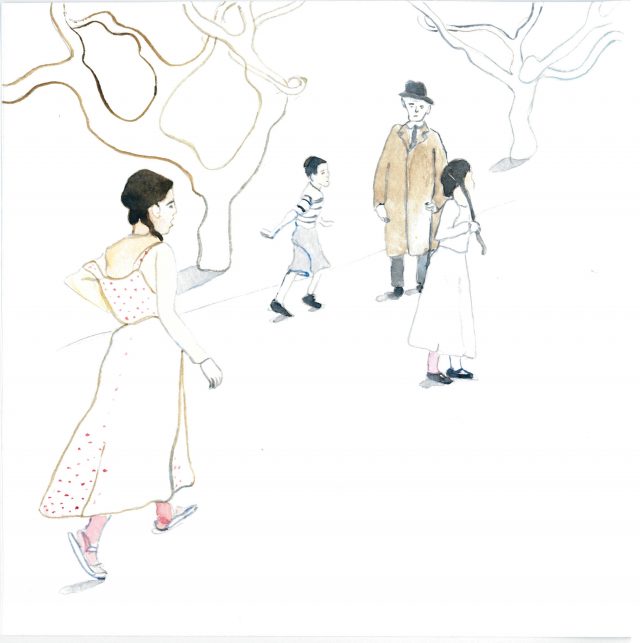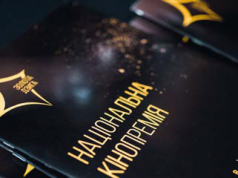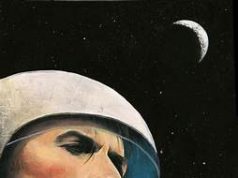The legendary first mayor of Tel Aviv got his start in business in Odessa and France before becoming a major figure in the Zionist movement.
“Pay attention to these wonderful forged balconies. One of them was made by the first mayor of Tel Aviv, Meir Dizengoff himself”, the guide exclaimed to us while we walked through the historic center of Odessa. At that time Dizengoff was not yet the mayor of the largest city of Israel, but only an apprentice at the Odessa “Trud” Craft School for Jewish youth, the guide continued. But for some reason the guide was sure of the fact that many balconies in the center of Odessa were indeed his handiwork. This incident happened quite a few years ago, and it was only then that I first heard of Meir Dizengoff. Today I know much more about this great, and simply fascinating man who was closely connected with Odessa and so much more.
Although Meir Yankelevich Dizengoff was born on February 25, 1861 in the Moldavian part of Bessarabia and studied at the Polytechnic College in Chisinau, a significant part of his life was spent in Ukraine. From March 1882 to February 1884 Dizengoff served in the army, stationed in the Ukrainian city of Zhitomir, where he was carried away by the revolutionary socialist ideas. He later spent a lot of time in Odessa. In April 1885, Dizengoff enrolled in the “Trud” Odessa School, where he studied cast-iron foundry. We do not know exactly why he chose Odessa, but we can assume that he was brought to the city by his innate sense of adventurism and eager search for activity.
The Odessa of the late nineteenth century opened up vast opportunities for a young man from a Jewish family. Many people who were forbidden to enter Moscow and St. Petersburg went instead to Odessa to make a career. For Jews of the nineteenth century, Odessa is a city where you can get a wide variety of pleasures from life. “Leben Wie Gott in Odess” — “To live as God in Odessa”. Its inhabitants are indifferent to the faith: “Sieben Meile arum Odess brennt der Geheinum” — “Hell is flaming seven miles from Odessa”. And Odessa fully met Dizengoff’s expectations. Here he studied, and here he plunged into political life — he joined the political party “Narodnaya Volya”, which used methods of terror (one of its members killed the Russian Emperor Alexander II) to achieve its goals. Not surprisingly, in August 1885, Dizengoff was detained by the Odessa police, after which he spent eight months in prison. At this time, his views took an important turning point: he became interested in the ideas of Zionism. Returning to his parents in Chisinau, Meir decided to dedicate his life to the national revival of the Jewish people. He became an activist of the “Hovevei Zion” movement (“Loving Zion”), and founded the Chisinau branch of this organization. However, as Meir was also a practical and ambitious man, he understood that he needed a good education, so Dizengoff went off to Paris. There he began to study in 1889 as a chemical engineer, and after graduation he specialized in working in a glass blowing plant in Lyon. Receiving in 1892 a proposal from Baron Edmond de Rothschild that he go to Palestine and establish a glass factory for the production of wine bottles near the town of Zikhron-Yaakov, he agreed without much hesitation. The settlement was supposed to bottle the wines produced in Jewish settlements with the factory’s products. But Dizengoff’s attempts to create the first workers organization on Jewish land, “Country and Work”, was not liked by the Rothschild administration: the baron disliked the socialists. Thus Dizengoff decided to return to Odessa, which he knew well.
In Odessa, Dizengoff became the director of the Belgian glass-blowing plant, managed a commission office, and also opened a small factory of trunks and suitcases on 66 Bolgarskaya Street. But he was restless and his soul simply yearned for public and political activity. Therefore, still being a keen follower of the ideas of Zionism, Dizengoff founded the organization “Geula”, which was engaged in the purchase and redemption of private land in Palestine for transfer to the future Jewish state.
It was this organization, in particular, that signed the contract for the purchase of the site, on which the Tel Aviv University was later built. From 1897 to 1905, the guests at his house on Avchinnikov Lane (now renamed Nechipurenko Lane), where the Geula headquarters was located, included many famous Jewish poets, writers and historians. Dizengoff was a delegate to the 5th and 6th Zionist congresses (1901, 1903, both held in Basel), and was active in opposing the plan for the creation of a Jewish settlement in parts of African Uganda. Together with his fellow Odessan Vladimir Jabotinsky, he initiated the creation of Jewish self-defense units. In Odessa at that time, he was generally a notable figure. According to some, the legendary Odessa song “7-40” is about Dizengoff:
“He’ll walk out of the wagon
And strut along the platform,
A magnificent fedora on his head
His great green eyes aiming East
Shining, this Odessa light.
Sure he is not from Odessa,
Sure he is not from Odessa,
But (streets) Fountain and Persipe
Await his presence in their courtyard!”
Indeed, Dizengoff had green eyes, he wore a cauldron, was not from Odessa, and “looked” to the east — to Palestine. However, in the competition for the starring role in that famed song, the great Zionist Theodor Herzl and the poet Hayim Bialik are also considered to be plausible candidate. In 1905, Dizengoff returned to Yafo, became engaged in the sea transportation business, and along with his commercial activities he continued, with the help of the “Geula” organization, to buy up land for the Jewish settlements. In 1909, he founded the company “Ahuzat Bayit”, whose task was to build a Jewish settlement near Yafo. After the first sixty houses had been readied, Dizengoff organized a lottery, the winners of which were allowed to move in. Sixty-six families participated in the contest. They were the first inhabitants of the village of Ahuzat Bayit, later called Tel Aviv, “Hill of Spring”. Meir Dizengoff was elected head of the new settlement committee, and from 1921 became the first mayor of Tel Aviv. And he remained in that post for the rest of his life, with the exception of a short gap between 1925-28, when he was involved in a local political scandal.
During the First World War, Dizengoff defended the population of Yafo and Tel Aviv from repression by the Ottoman Empire, which at that point included Palestine. After the war, he managed to give Tel Aviv a new impetus to development. In 1934, in honor of the city’s 25th anniversary, he secured the recognition of Tel Aviv as an independent city from the British authorities, (it was now considered independent from Yafo). And during the Arab riots of 1936, he was able to persuade the British to transfer government offices from Yafo to Tel Aviv.
Dizengoff knew how to achieve his goals, and he was also a very good PR man. But his goal was not to increase his own popularity. He strove to light other people’s projects with his own energy. It is said that one day he called journalists to attend the opening of a new port in Tel Aviv. However, when the reporters came to the shores of the Mediterranean Sea, they saw only sand. Many considered this a bad joke and promised to teach the madman mayor a lesson. But when Dizengoff appeared, he addressed all those present with a fiery speech: “Ladies and gentlemen! I still remember the day when there was no seaport in Tel Aviv..”.. The mayor of the young Jewish city spoke very convincingly and was full of optimism, and everyone forgave him. And the seaport of Tel Aviv was really built, but only 25 years later.
Dizengoff generally had a reputation for being an eccentric, and there were many legends and funny stories about him. For example, within the archives of the Tel Aviv municipality, a report issued by the police to M. Dizengoff is kept, that states that on July 29, 1921 the mayor swam nude in the sea while attending a public beach. He also once rode a horse in a public park. In both cases, the mayor was fined, and the head of the Tel Aviv police, Haim Alperin, wrote to Dizengoff in a letter: “I believe that the man who approves the laws must also obey them!”
So it is no surprise that many of the inhabitants of Tel Aviv thought Dizengoff was a little crazy. Nonetheless, they loved him. The house of Zina and Meir was the center of the cultural life of Tel Aviv. Meetings were held with writers, politicians and artists. After the death of Zina, in 1930, in memory of his wife, Dizengoff created a city museum there, sacrificing his own home on Rothschild Boulevard for it. It was in this very house on May 14, 1948 that David Ben-Gurion proclaimed the creation of an independent state of Israel. Now the house is known as the Hall of Independence — a museum which holds exhibits dedicated to the signing of the Declaration of Independence of Israel.
One of the main streets of the city bears the name of Meir Dizengoff. Also, the city park on the King George Street is named after the legendary mayor, and the square is named in honor of his wife Zina.
And what about Odessa? During the time of Soviet Union, even the very name of this active Zionist was banned. But today, historical justice has been restored. Odessa has installed memorial plaque at his former home on 30 Osipova Street. Also, a few years ago on the Odessa’s Nichipurenko Lane, at the house number 12 a commemorative plaque was placed, dedicated to the organization “Geula” and the birth of the State of Israel. However, I think that today more Odessans know about the mayor through the cafe “Dizengoff”, which bears his name on Catherine Square. Although not all of its visitors know who it is named for, it is still a good and honorable way to preserve the history of a remarkable man who got his start in our wonderful city.
Vadim Goloperov is a staff writer at The Odessa Review.




































